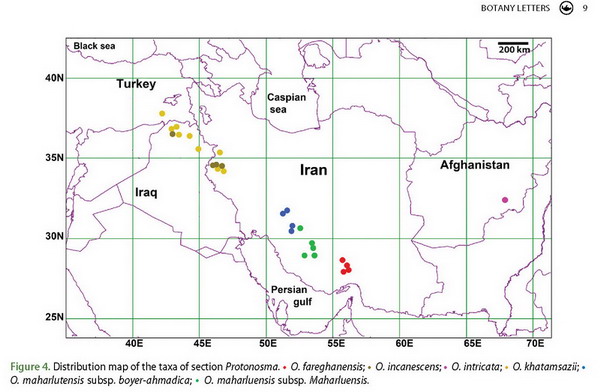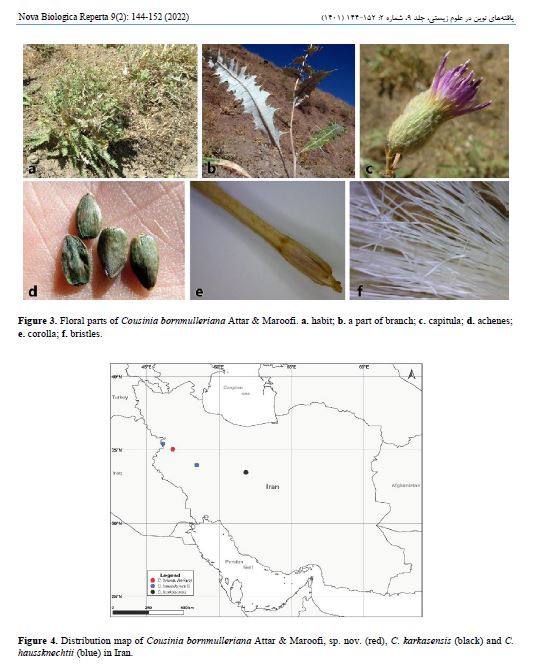Abstract:
During a survey of the genus Onosma L. section Protonosma Popov subsect. Rostellatae Riedl, we examined several populations assigned to Onosma rostellata Lehm. (sensu lato) using morphology and molecular evidence. Our morphological review revealed a hairy corolla outside in all specimens, an anther length equal to the filament length, and nectariferous rings hairy or glabrous, as opposed to the descriptions provided in Flora Iranica and Flora of Turkey.
We updated itsdescription which were in contradiction with the character states found on the type specimen.
Five new taxa were identified among the specimens identified as O. rostellata to date and described based on molecular data and morphological examination:
Onosma khatamsazii Attar, Mirtadzadini & Sotoodeh – a new species from Kermanshah province,
O. fareghanensis Attar, Mirtadzadini & Sotoodeh – a new species from the mountainous region of the north of Hormozgan province, and
Onosma maharluensis Attar, Mirtadzadini & Sotoodeh – a new species including two subspecies, namely :
O. maharluensis Attar, Mirtadzadini & Sotoodeh subsp. maharluensis and
O. maharluensis subsp. boyer-ahmadica Attar, Sotoodeh & Mirtadzadini from Iran.


To download the article please click here (DOI: 10.1080/23818107.2023.2166581).
Cite as: Farideh Attar, Arash Sotoodeh, Mansour Mirtadzadini, Mehdi Daemi & Laure Civeyrel (2023): New findings in Onosma section Protonosma (Boraginaceae) using morphological and molecular evidence, Botany Letters,
DOI: 10.1080/23818107.2023.2166581



